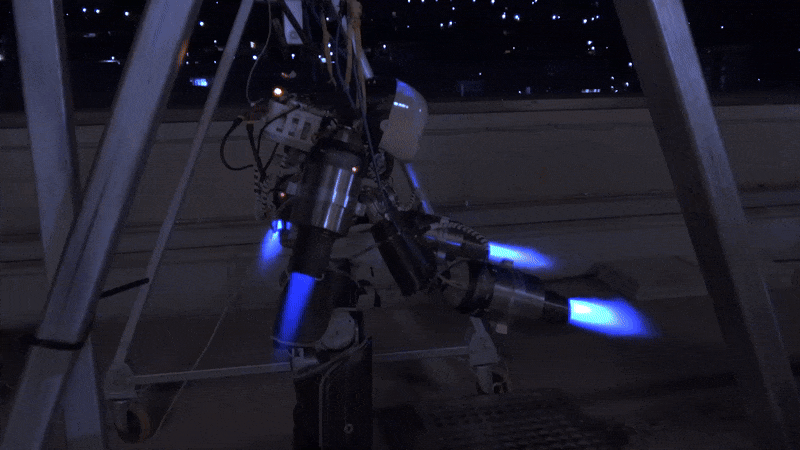Video Friday is a weekly selection of great robotics videos curated by our friends at IEEE Spectrum Robotics. It also features a weekly calendar of robotics events for the coming months. Send us your event and we’ll feature it.
ICRA@40: 23-26 September 2024, Rotterdam, Netherlands ICRA 2024: 14-18 October 2024, Abu Dhabi, UAE ICSR 2024: 23-26 October 2024, Odense, Denmark CYBATHLON 2024: 25-27 October 2024, Zurich
Enjoy today’s video!
If the Italian University of Technology’s iRonCub3 looks this cool during flight training, imagine how cool it will be when it actually takes off.
Hovering is currently under development, but it is a very difficult problem – see Daniele Pucci’s LinkedIn post for more details.
[ LinkedIn ]
Stanford Engineering and Toyota Research Institute Achieve World’s First Automated Tandem Drift. Stanford Engineering and TRI are using the latest AI technology to make driving safer for everyone. By automating a motorsports driving style known as drifting, where the driver intentionally spins the rear wheels to lose traction, the team has opened up new possibilities for future safety systems.
[ TRI ]
Researchers from the Italian Institute of Technology have demonstrated that under certain conditions, humans are able to treat robots as co-authors of the results of their actions. The conditions that make this phenomenon possible are that the robots behave socially and human-like: exchanging eye contact and participating in shared emotional experiences, such as watching a movie, are key.
[ Science Robotics ]
If Aibo isn’t cat-like enough for you, this is the one for you.
[ Maicat ] via [ RobotStart ]
I have never been more excited about bridging the gap between simulation and reality.
[ USC Viterbi ]
Sorry, but this looks exactly like a quadcopter on a test stand.
The 12-pound quad biplane combines four rotors and two wings with no control surfaces. The aircraft takes off like a traditional quadcopter and transitions into a more efficient horizontal cruise flight similar to a biplane. This combines the simplicity of quadcopter design, which provides vertical flight capability, with the cruise efficiency of a fixed-wing aircraft. The rotors are responsible for controlling the aircraft in both vertical and forward cruise flight.
[ AVFL ]
Tensegrity robots are very strange and I sincerely hope they are useful.
[ Suzumori Endo Lab ]
Top performing robots need all the help they can get.
[ Team B-Human ]
And now the beetle is about to be hit by an autonomous robot.
[ WVUIRL ]
Humans have the remarkable ability to utilize the viscoelastic properties of muscles to maintain balance and react to unpredictable disturbances with immediate mechanical responses. Inspired by this behavior, we propose a novel design for a robotic leg that utilizes fiber-filled structures as a passive adaptive mechanism to achieve tunable joint stiffness and damping.
[ Paper ]
I don’t know what this furniture is, but I’m sure your cats will love it.
[ ABB ]
[ Extend Robotics ]
I’d never really thought about it, but wind turbine blades are hollow inside and need to be inspected from time to time – this is one of those jobs that’s much better done by a robot.
[ Flyability ]
Here’s a complete drone delivery mission, including picking up a package from an AutoLoader, a simple, unpowered mechanical device that enables our retail partners to leverage drone delivery into their existing curbside pickup workflows.
[ Wing ]
Daniel Sim and his acrobatic robot competed on America’s Got Talent, and although his robot did something robotic by destroying itself at the last minute, it performed extremely well.
[ Acrobot ]
A tour of the Creative Robotics mini exhibition at the Creative Computing Institute, University of the Arts London.
[ UAL ]
Thank you, Hooman!
Zoox CEO Aicha Evans and co-founder and CTO Jesse Levinson hosted LinkedIn Live last week to reflect on building Zoox over the past decade and offer predictions for the autonomous vehicle industry over the next decade.
[ Zoox ]

